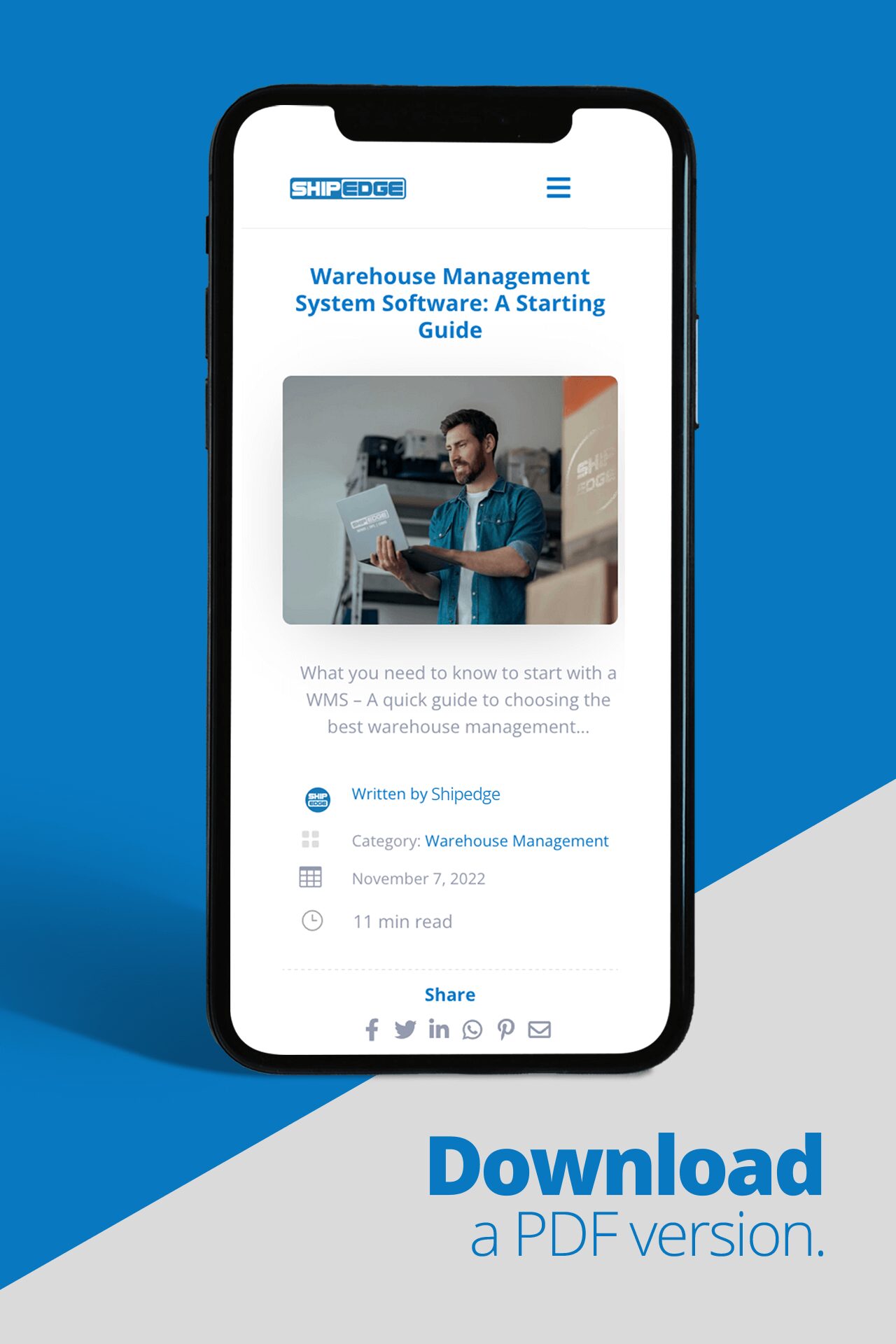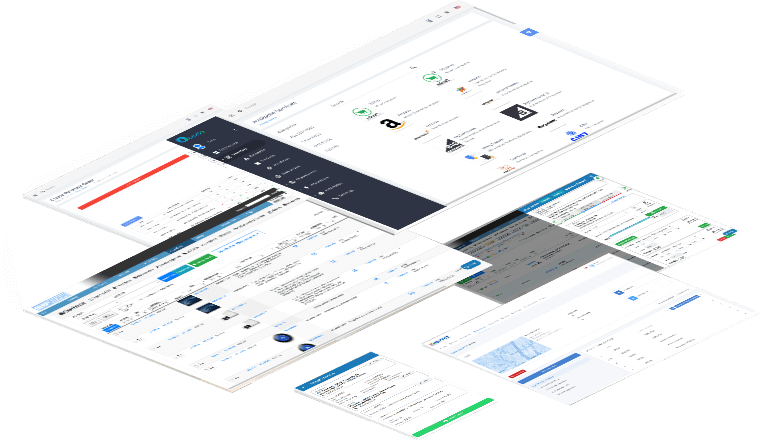In the modern world of business, there’s one thing that’s almost as valuable as a solid product or a dedicated workforce: seamless integration. As businesses evolve to accommodate the rise of eCommerce and the need for multi-channel and omnichannel strategies, the importance of integrations between various systems, such as Warehouse Management Systems (WMS), Enterprise Resource Planning (ERP), and eCommerce platforms, is more significant than ever before. This blog post will delve into the intricacies of integrations, what it means to be omnichannel, and how a solution like Shipedge can play a role in this intricate ecosystem.
What are Integrations?
In the context of omnichannel strategies, integrations refer to the process of linking different systems, applications, and software together so that they can work as a unified whole. This can include everything from the integration of e-commerce platforms and ERP systems to the integration of social media platforms and Customer Relationship Management (CRM) systems.
Integrations are crucial for providing the seamless and consistent customer experience that defines an omnichannel approach. They enable data to flow freely between different systems, ensuring that all parts of the business have access to the same up-to-date information. This improves efficiency, reduces the risk of errors, and supports more informed decision-making.

Channel Integrations
Channel integrations pertain to the seamless synchronization of data and functions between different sales channels. This could involve brick-and-mortar stores, online marketplaces, or social media platforms. In an era where customers expect a unified shopping experience across all channels, having channel integrations ensures consistency in product information, pricing, and availability. This offers customers the flexibility to shop anytime, anywhere, and through any device, thereby enhancing the overall customer experience.
eCommerce Integrations
Ecommerce integrations connect your eCommerce platform to your other business systems, such as your ERP, WMS, or Customer Relationship Management (CRM) system. This integration facilitates real-time data exchange between systems, providing you with up-to-date sales, inventory, and customer data. For instance, as soon as an order is placed on your eCommerce site, it can be automatically updated in your ERP or WMS, triggering the order fulfillment process. Such real-time synchronization helps in maintaining inventory accuracy, speeding up order processing, and improving customer satisfaction.
Shipping Integrations
Shipping integrations involve connecting your business systems with those of your shipping carriers. By integrating your WMS, ERP, or eCommerce platform with your shipping providers (USPS, UPS, FedEx, DHL, etc), you can automate the shipping process, right from label printing and shipment tracking to returns management. Shipping integrations can save time, reduce errors, and provide a more transparent shipping process for both your business and your customers.
Having a variety of shipping carriers integrated into your warehouse management system can help determine the cheapest way to fulfill eCommerce orders based on factors such as delivery date, zone, and dimensions of the parcel.
ERP Integrations
ERP integrations refer to the process of connecting your ERP system with your other business systems, like your WMS, eCommerce platform, or shipping carriers. By doing so, you can automate the flow of data between systems, reducing manual data entry, eliminating errors, and increasing efficiency. ERP integrations can provide a unified view of your operations, streamline business processes, and improve decision-making.
While connecting your ERP to your WMS can be done, ERPs usually have different configurations and ways to be implemented. This means that building an ERP integration for your WMS is usually a custom project requiring a bit more time and resources than basic selling channel integrations. Oftentimes, WMS providers supply APIs and technical endpoints to business owners in order to access the data they need from the WMS to build their own integration and perform the desired actions in the warehouse management system.
What is Omnichannel?
To understand how to have a successful omnichannel strategy for your integrations, it’s helpful to know what omnichannel means.
In the context of eCommerce, omnichannel refers to the connectivity of all channels that a business may use to operate and sell products. It involves integrating various channels – both offline and online – and ensuring that they work together.
Implementing an effective omnichannel strategy requires a deep understanding of your customers and their journey. It demands seamless integration between all the platforms and systems a business uses – be it their warehouse management system, ERP, or various eCommerce platforms like Shopify, Amazon, WooCommerce, etc. This level of integration provides businesses with the data they need to personalize and streamline the customer experience, from product discovery to purchase and beyond.

What is the difference between Omnichannel and Multichannel?
To fully leverage the power of integrations, businesses need to grasp the strategies that underpin them: omnichannel and multichannel. These concepts, often used interchangeably but fundamentally different, dictate how businesses interact with their customers in the online world.
While both omnichannel and multichannel involve using multiple channels to reach customers, the key difference lies in their level of integration and the customer experience they offer.
A multichannel strategy involves selling through various channels independently of each other. In contrast, an omnichannel strategy integrates these channels to provide a unified, seamless experience across all touchpoints.
An omnichannel approach focuses on building a cohesive customer journey, where each channel complements the others and enhances the overall customer experience.
Omnichannel in Logistics and Retail
In logistics and retail, an omnichannel approach helps deliver a consistent shopping experience across all channels. It involves integrating systems like WMS, ERP, and eCommerce platforms to provide real-time inventory visibility, flexible order fulfillment options like buy online pick-up in-store (BOPIS), and seamless returns management. This strategy can lead to improved customer satisfaction, increased sales, and higher customer loyalty.
Omnichannel in Sales and Marketing
In sales and marketing, omnichannel means something slightly different, but still maintains the idea that everything should be interconnected. For sales and marketing, an omnichannel approach means providing a consistent and personalized customer experience across all marketing and sales channels. It involves understanding the customer’s journey, using data from various touchpoints to gain insights into their behavior, and delivering personalized messages at the right time and on the right channel. This strategy can lead to higher customer engagement, improved conversion rates, and increased customer retention.
To give sales and marketing an easier time strategizing their efforts, ensure that your omnichannel experience begins with your selling channels, logistics, and retail operations. Customers want a cohesive and seamless experience when shopping online, which is much easier to do once you’ve connected all of your platforms.
How do I have an Omnichannel Strategy?
Creating a successful omnichannel strategy requires a deep understanding of your customers, robust integrations between your business systems, and a consistent brand message across all channels. Here are some steps to help you build an effective omnichannel strategy:
- Understand Your Customer: Start by understanding your customers, their needs, preferences, and their typical journey with your brand. Use data from all touchpoints to gain insights into their behavior and preferences. The goal is to create a seamless and personalized customer experience across all channels.
- Seamless Integration: Integrating your business systems is crucial to an omnichannel strategy. This includes your WMS, ERP, eCommerce platforms, shipping providers, and any other systems you use. Seamless integration ensures real-time data exchange between systems, enabling you to provide up-to-date product information, accurate inventory levels, and faster order fulfillment.
- Consistent Brand Message: Ensure that your brand message is consistent across all channels. This includes your product information, pricing, promotional offers, and customer service. A consistent brand message reinforces your brand identity and improves the customer experience.
- Data-Driven Decisions: Use the data from your integrated systems to make informed decisions. This could involve identifying popular products, analyzing sales trends, understanding customer behavior, or optimizing your inventory management. Data-driven decisions can help you improve your operations, enhance the customer experience, and increase profitability.
- Regular Review and Improvement: An omnichannel strategy is not a set-it-and-forget-it solution. Regularly review your strategy, measure its effectiveness, and make necessary improvements. This could involve adding new channels, improving integrations, or personalizing your marketing efforts.
Remember, implementing an omnichannel strategy is a journey, not a destination. It requires constant evaluation and adjustment to meet changing customer expectations and market trends. But with the right strategy, tools, and commitment, you can provide a seamless and engaging customer experience that sets your brand apart.
Discover how our WMS can improve your business
Shipedge Omnichannel Integrations
While discussing integrations and omnichannel strategy, it’s worth mentioning the role a solution like Shipedge can play. Shipedge is a cloud-based solution that offers robust WMS and Order Management System (OMS) capabilities. It can seamlessly integrate with your existing ERP system as a custom solution, as well as eCommerce platforms, providing a unified view of your operations.
When you make the decision to add Shipedge’s warehouse management system to your technology stack, you’re adding the possibility to connect to over 130 of Shipedge’s integrations. Some popular integrations include Shopify, Amazon, Walmart, USPS, Etsy, and more essential connections for your business. As mentioned above, Shipedge can also integrate with your ERP as a custom solution.
Through its comprehensive suite of features, Shipedge simplifies the management of multiple inventory locations, facilitates efficient order fulfillment, and offers the analytics you need for informed decision-making. It’s designed to be the backbone of your omnichannel strategy, offering a level of integration that bridges the gap between different systems, eliminates data silos, and enhances operational efficiency.
Discover how our WMS can improve your business













0 Comments